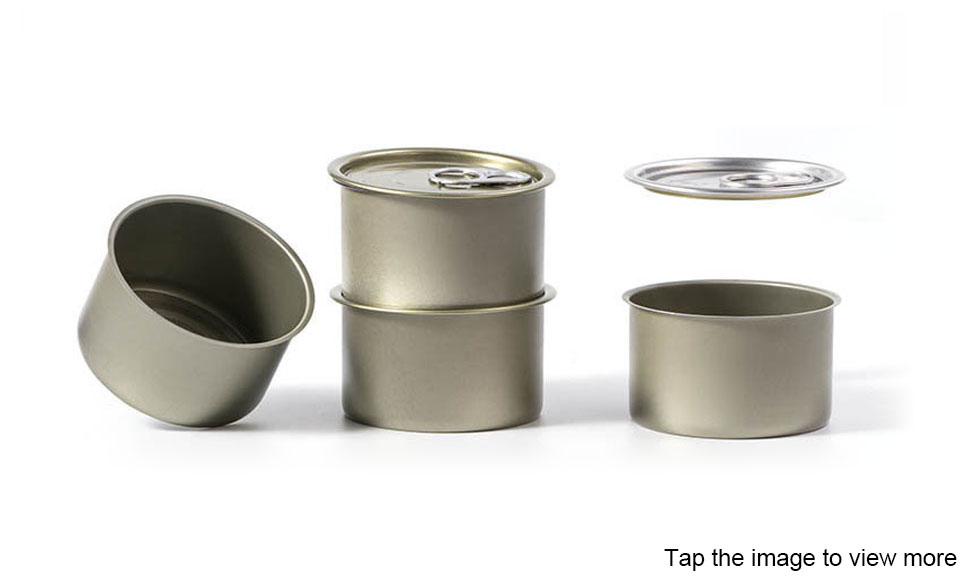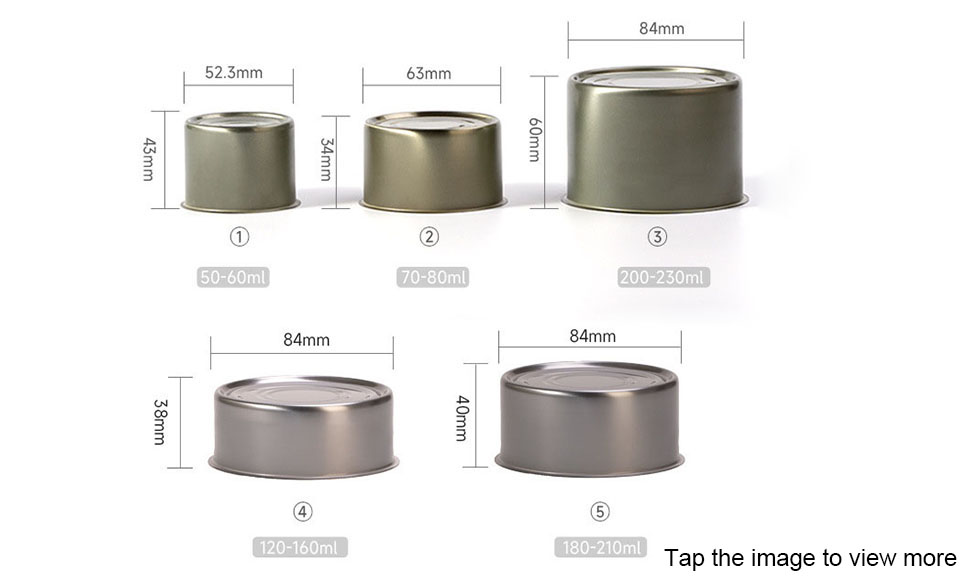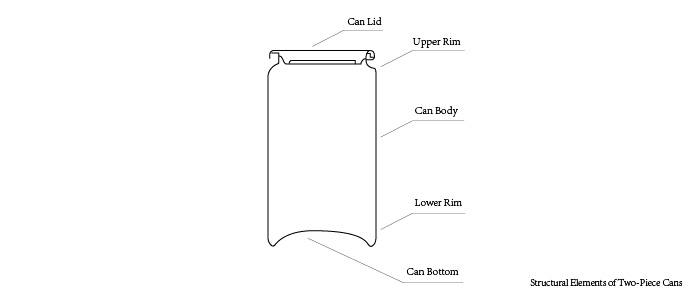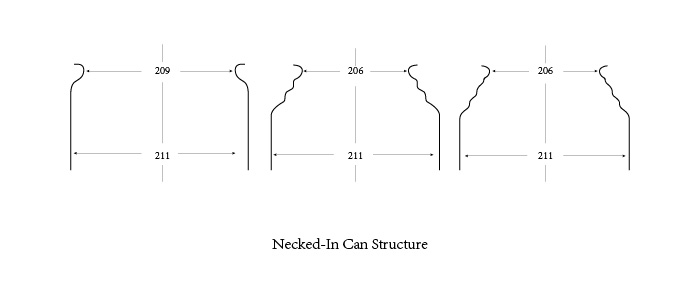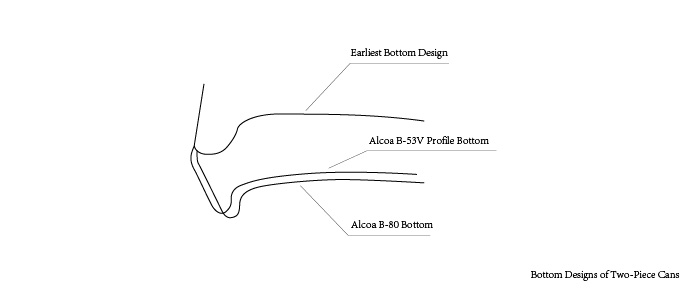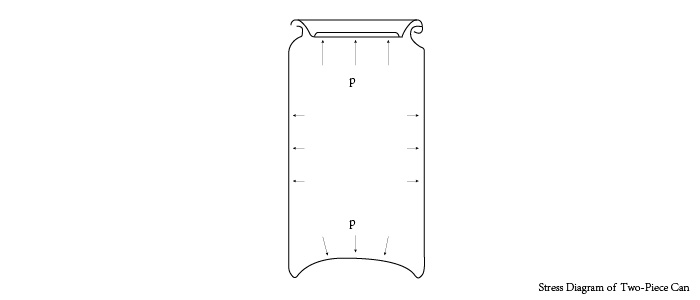What Are Two-Piece Metal Cans?
A two-piece can, also known as a stamped can, is a type of metal packaging container consisting of a lid and a seamless body. Commonly made from aluminum, tinplate, or chromium-coated steel, it offers advantages such as light weight and excellent sealing performance, making it widely used in the packaging of carbonated beverages and various foods.
Darren Yi
yy-package@zmartechome.com
Section 1: Overview of Two-Piece Cans
1. Development History of Two-Piece Cans
Among materials used in metal packaging, aluminum ranks second after steel. Aluminum has many advantages, such as abundant reserves, light weight, easy processing, and strong corrosion resistance.
In the 1940s, British manufacturers applied stamping technology to the production of food containers, producing shallow-drawn aluminum cans. This marked the beginning of a new era in can manufacturing, as traditional fabrication techniques were adapted to packaging. Subsequently, the U.K. and the U.S. continued to study and refine aluminum stamping technology.
In the early 1960s, Reynolds Metals Company in the U.S. pioneered the modern “D&I” (Drawn and Ironed) process for manufacturing two-piece cans, achieving high-efficiency mass production. By 1963, Reynolds had produced the first commercial 355 ml two-piece aluminum can. Around the same time, the Aluminum Company of America (Alcoa) developed easy-open end technology. The combination of these two innovations opened vast markets for aluminum cans, rapidly driving the growth of the industry.
The first commercial two-piece aluminum can entered the market in 1958. Thanks to their low cost and high productivity, these cans quickly dominated the beverage packaging sector.
In the mid to late 1970s, two important processes—necking and domed can bottoms—were introduced. These innovations significantly reduced metal consumption while improving aesthetics and stackability, marking milestones in two-piece can manufacturing.
In China, the production of aluminum two-piece cans began in 1985, with investments totaling USD 300 million for the import of 13 production lines. At that time, the annual capacity reached 11 billion cans. However, because aluminum production is energy-intensive, rising global aluminum prices limited usage. As a result, many countries launched aluminum recycling initiatives (the theoretical energy consumption of recycled aluminum is only one-tenth that of primary aluminum).
Meanwhile, manufacturers sought to reduce aluminum usage by improving can-making processes and designs, including thinning the can wall and reducing the diameter of can ends. Advances in material properties and manufacturing technology significantly lightened the weight of cans. Alongside aluminum cans, thin steel sheets such as tinplate and chromium-coated steel have also been used to manufacture two-piece steel cans.
Today, two-piece can production lines achieve high-speed and highly automated output. A single line producing 2,400 cans per minute can be operated by only nine workers. Artificial intelligence is now applied throughout the production process, enabling intelligent manufacturing, smart warehousing, and even fully AI-driven factories, creating a disruptive transformation in the industry.
2. Types of Two-Piece Cans.
Based on forming processes, two-piece cans can be classified into the following categories:
(1) Drawn Cans
Manufactured using conventional drawing methods, these cans are primarily used for canned foods. The wall thickness remains relatively uniform, with little difference between the sidewalls and the bottom. Depending on the ratio of height to diameter, drawn cans can be further divided into:
- Shallow-Drawn Cans: Also called shallow-stamped cans, these are formed in a single draw. The height-to-diameter ratio does not exceed 1:2. They come in various shapes (round, oval, heart-shaped, rectangular) and are widely used for fish, ham, and luncheon meat.
- Deep-Drawn Cans: Also known as DRD (Drawn and Redrawn) cans outside China. These have a height-to-diameter ratio greater than 1 and are produced by multiple drawing operations. They are mainly used for packaging tea, biscuits, candies, coffee, and similar products.
(2) Drawn and Ironed (D&I) Cans
Commonly referred to as “D&I cans” or “DI cans” (in Europe, “DWI cans”), these are formed by an initial draw (sometimes followed by a redraw), then wall ironing to thin the sidewalls while keeping the diameter unchanged.
Key features:
- Sidewall thickness reduced to about one-third of the original sheet thickness;
- Lightweight yet strong;
- Bottom thickness remains nearly unchanged;
- Primarily used for carbonated beverages and beer, where internal gas pressure helps maintain structural rigidity.
3. Key Features of Two-Piece Cans
From a structural perspective, two-piece cans have the following characteristics:
- Seamless Body: Formed from a circular sheet blank through multiple stamping and drawing processes. The finished body is smooth, seamless, and uniform.
- Integrated Bottom and Sidewall: Unlike three-piece cans, two-piece cans have no seam between the body and the bottom.
- Versatile Shapes: Can be manufactured in cylindrical or irregular shapes. Even cylindrical cans can have enhanced strength and aesthetics by modifying the upper or lower edges.
- Easy-Open Ends: Most two-piece cans use easy-open lids, improving consumer convenience.
Section 2: Common Materials and Content Compatibility
1. Materials and Their Properties.
Raw materials for two-piece cans include tinplate, coated tinplate, black plate, aluminum alloy sheets, film-laminated steel, and more.
- Tinplate (electrolytic tin-coated steel): Widely used in food and non-food cans.
- TFS (Tin-Free Steel or Chromium-Coated Steel): Replaces some tinplate applications, mainly in food containers.
- Aluminum Alloy Sheet: Lightweight, non-toxic, odorless, corrosion-resistant, glossy, and ductile. However, it is costlier—about five times more than steel. Its oxide film protects against oxidation but requires internal coatings for acidic or salty products.
Material selection depends on product requirements:
- Drawn cans require thicker sheet metal for bottom strength;
- Deep-drawn cans often use softer materials to withstand multiple forming steps;
- D&I cans mainly use aluminum alloy (AA 3000 series), though tinplate is increasingly adopted due to rising aluminum prices.
2. Content-Specific Considerations.
Three-piece cans are mainly used for food packaging. Depending on the product, different coatings are required to prevent corrosion, discoloration, or chemical reactions.
- Beer and soft drinks: Typically packaged in aluminum cans due to their need for lightweight and pressure-resistant containers.
- Shallow-drawn cans: Ideal for seafood (fish, shellfish, shrimp, crab), reducing wall corrosion.
- Deep-drawn cans: Suitable for vacuum-sealed products like ham and luncheon meat that undergo heating.
- Carbonated beverages: Require internal coatings to resist acid, salts, anthocyanins, and alcohols. For products like beer, coatings must prevent iron ions from leaching into the drink, preserving flavor and clarity.
Section 3: Structure and Design of Two-Piece Cans
1. Structural Components.
Two-piece cans typically consist of five parts: bottom, lower rim, sidewall, upper rim, and end.
- Upper Rim: Necked-in design reduces can diameter to match smaller lids, saving material.
- Sidewall: Smooth and printable, designed to provide vertical compression strength.
- Lower Rim: Connects sidewall and bottom, ensuring strength and aesthetic form.
- Bottom: Usually domed, supports internal pressure.
- End (Lid): Seals the can, often reinforced with ribs or sloped edges; beverage cans commonly use standardized easy-open ends.
2. Structural Design.
- Shape & Dimensions: Cylindrical cans are most material-efficient. Square or irregular cans consume more metal (up to 40% more). Standardization is emphasized for compatibility.
- Upper Rim (Necking): Since the 1980s, multi-stage necking (double, triple, quadruple) and spin necking (developed by Metal Box in the UK) have been widely adopted.
- Bottom Design: Domed bottoms ensure strength. With thinner sheets (330-320 μm), more complex profiles such as Alcoa's B-53 or B-80 bottoms are used to meet strength requirements.
- End Design: Reinforcing ribs and slopes prevent deformation during production.
3. Optimization in Design.
Aluminum cans are among the most sustainable packaging options, as aluminum can be infinitely recycled with minimal resource loss. From an economic standpoint, design aims to reduce material thickness while maintaining strength.
Because cans are pressure vessels, the bottom must be concave to prevent bulging during filling and storage. Optimized wall thickness, domed bottoms, and reduced end diameters ensure safety, cost efficiency, and stability.
This content is provided by the YYBOXES Packaging Innovation Center. We specialize in premium aluminum packaging solutions, helping brands enhance product value and strengthen market competitiveness.
